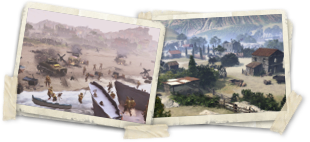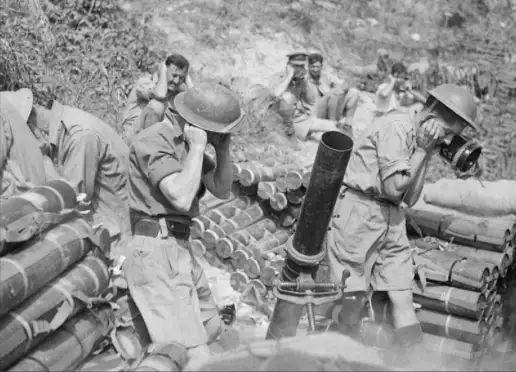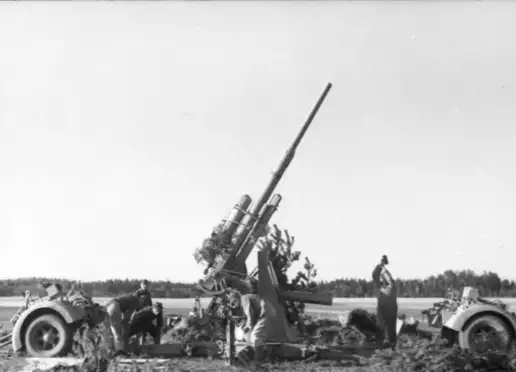
Experience it in game
Play through the battle yourself in the immersive Company of Heroes 3 campaign.
 Experience the dynamic campaign in game with
Experience the dynamic campaign in game with 
 Find out more
Find out moreGuns blazing, unwavering doggedness, crippling defeat: ‘El Alamein – The Line of Fire’ recounts this famous North African battle from the perspective of Italian troops during the Second World War.
The 2002 release received critical acclaim, winning three Italian Academy Awards, appearing at international film festivals and scoring a respectable 79% on Rotten Tomatoes. But just how accurate is its portrayal?
Read on for facts and expert insights about this raw El Alamein film, from its airtight accuracies to its less-than-factual depictions.
Among a spate of WW2 flashpoints, the Battle of El Alamein marked a significant turning point in the North African campaign. The clear-cut victory of the British Eighth Army has long been documented, but what of the Axis powers?
Ill-led by the imperial ambitions of Benito Mussolini, the Italians were thrust into battle with little equipment and even less hope. They largely fought on foot, lacking the more widespread motorised abilities of their German peers or the Allied forces. After a gruelling two weeks, they suffered a decisive defeat by the British, with an estimated 10,000 troops killed or wounded.
Capturing the essence of war on the big screen is no easy feat. But director Enzo Monteleone had a vision: to present the harrowing conflict through the eyes of Italian soldiers.
Trailer
El Alamein - The Line of Fire trailer
However, this El Alamein film isn’t the first of its kind. According to Simon Ball, Professor of International History and Politics at the University of Leeds, the film is actually a remake of a remake.
‘El Alamein – The Line of Fire’, also known as ‘El Alamein - La linea del fuoco’ in its native Italian, was remade from the 1957 Italian film ‘Alamein’, which was itself a remake of a 1954 film known as ‘Division Folgore’. A set of cinematic Russian dolls, it seems.
Professor Ball, who has written several books on El Alamein, says: “It's about the Italians being nice guys who find themselves in this ghastly place, facing massive material inferiority.”
He goes on to explain that the story was developed largely around the Folgore Division, whereby commander General Frattini and the officers are “the most active in memorialising…El Alamein”.


Experience it in game
Play through the battle yourself in the immersive Company of Heroes 3 campaign.
When the unit comes under attack by a British sniper and medics are injured in the film, the troops rely on mortars to retaliate. These artillery weapons fire explosive shells (known as mortar bombs) into the air at a low speed, but with a high trajectory.
As mortars have a short range, they can only be fired at nearby targets. So, it is unlikely this would have made for an even match with a long-range sniper weapon.
As the Italian army severely lacked proper weapons and equipment, however, their mortar teams actually did become notorious for their skill. This expertise was possibly born out of necessity, as they had no other options.

The troops in the movie often refer to being shelled by “English 88s”, which is in fact correct. The 88mm was used as an anti-aircraft and anti-tank gun, firing an 88mm calibre shell. Known for its destructive power and lethal accuracy, it was one of the most famous artillery pieces of the Second World War.

Bundesarchiv, Bild 101I-724-0135-16 / Briecke / CC-BY-SA 3.0
Most of this El Alamein movie was shot at night, but this does little to veil the armoured vehicles used, which don’t actually belong in the WWII period. With the car wreck which the sniper hides behind, for example, the build was likely made after 1958. Another vehicle, a US White M3 half-track, acts as a German half-track.
The motorcycle which delivers Serra and then rescues him at the end is also believed to be a Moto Guzzi Super Alce. This particular model wasn’t released by Moto Guzzi until 1946, so a more accurate motorcycle would have been the precursor model.
©Relic Entertainment. All rights reserved. Developed by Relic Entertainment. Entertainment, the Relic Entertainment logo, Company of Heroes and the Company of Heroes logo are either registered trademarks or trademarks of Relic Entertainment. Relic Entertainment is registered in the U.S. Patent and Trademark Office. All other trademarks, logos and copyrights are property of their respective owners.